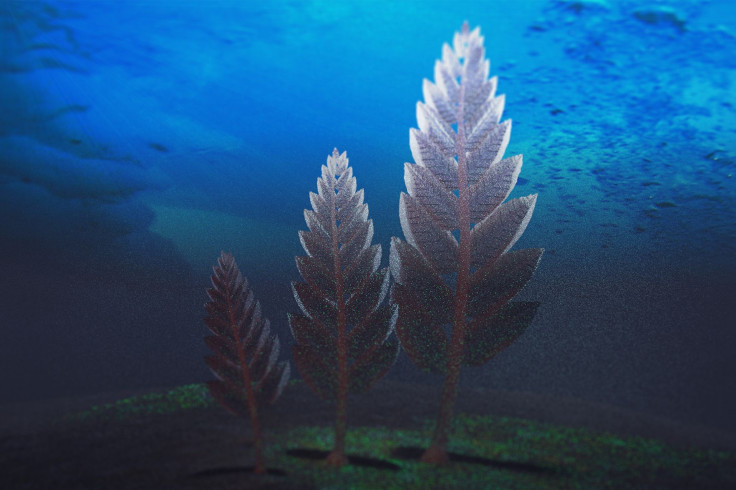Rangeomorphs, Earliest Large Animals, Grew Up To Over 6 Feet Tall Due To Nutrient Availability

Life has existed on Earth for about 4.28 billion years, and while there is still debate over a definitive timescale, the first animals are thought to have appeared about 850 million years ago. But the earliest animals, like all other life at the time, were mostly microscopic in size and the first large animals show up in the fossil record only about 635 million years ago.
Rangeomorphs were among the earliest large animals on our planet, ranging from only a few centimeters (inches) in height to up to two meters (almost 7 feet) tall. And their sudden appearance in the fossil record has led scientists to question why life on Earth evolved from small to large at that particular point in evolutionary history.
Two researchers studied rangeomorph fossils from Australia, Canada and the United Kingdom, using multiple methods like micro-CT scanning, photographic measurements, as well as mathematical and computer models. Their analysis provides the earliest evidence of a phenomenon called ecophenotypic plasticity — the name for the changing of body size and shape of organisms based on the availability of nutrients.
Read: When Did The First Animals Evolve?
According to Jennifer Hoyal Cuthill, from University of Cambridge’s Department of Earth Sciences and Tokyo Institute of Technology’s Earth-Life Science Institute, and Simon Conway Morris, from Cambridge, rangeomorphs showed a strong degree of ecophenotypic plasticity that gave them an advantage in a world that was rapidly changing at the time.
Living during the Ediacaran period between 635 million years and 541 million years ago, rangeomorphs had soft bodies in a geometric shape called a fractal, like ferns, snowflakes or lungs. They were made up of branches, each of which had many smaller side branches. And while they look like at least somewhat like plants, scientists consider them to be among the earliest animals. It is difficult to tell for sure, because they don’t resemble any modern organisms.
“During the Ediacaran, there seem to have been major changes in the Earth’s oceans, which may have triggered growth, so that life on Earth suddenly starts getting much bigger. It’s probably too early to conclude exactly which geochemical changes in the Ediacaran oceans were responsible for the shift to large body sizes, but there are strong contenders, especially increased oxygen, which animals need for respiration,” Hoyal Cuthill, lead author of the paper, said in a statement Monday.
Read: Whales Weren’t Always The Gigantic Creatures We See
When the amount of available nutrients in the upper layers of the ocean increased, the ecophenotypic plasticity of rangemorphs allowed them to reach the upper layers by shape-shifting into a long tapered form. This reasoning also ties in with the fact that a lot of changes to the ocean’s nutrient composition followed a large-scale ice age called the Gaskiers glaciation, which took place about 579 million years ago.
However, while the increased availability of nutrients and oxygen allowed rangeomorphs to grow in size, it also led to their eventual extinction. As the “Cambrian Explosion” began 541 million years ago, rapid evolution created most major animal groups, and the rangeomorphs died out.
Titled “Nutrient-dependent growth underpinned the Ediacaran transition to large body size,” the paper appears in the journal Nature Ecology & Evolution.
© Copyright IBTimes 2024. All rights reserved.











